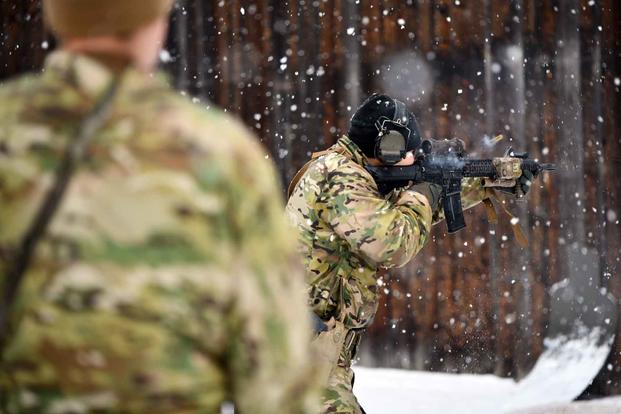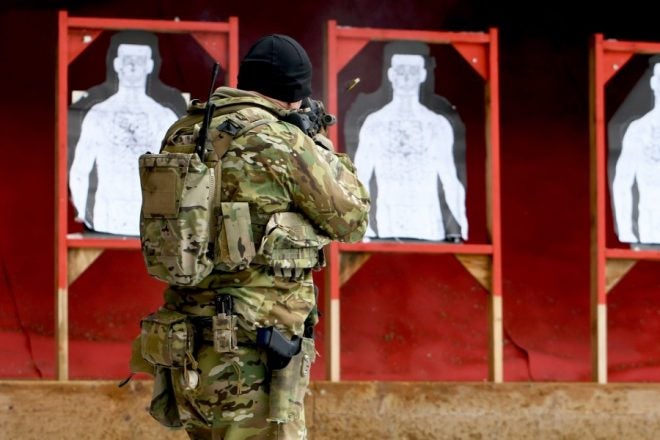For all shooters, increased levels of lead in our bloodstream are a constant concern. Anytime you discharge a firearm, you’re potentially inhaling a lot of unhealthy chemicals including atomized lead. Army soldiers that shoot for a living are particularly susceptible to potentially toxic levels of lead in their blood due to their training regimen. In a recent assessment conducted at a training facility in Germany, it was found that recent changes to the range regulations had dramatically reduced the blood lead levels found in tested soldiers.
More About Lead Exposure @ TFB:
- Lead poisoning and testing for lead
- PSA: Metal Fever – Beyond Lead Poisoning
- Shooters Cleanse Yourselves! Otis Lead Remover Hand Wipes
- nP Technology Lead-Free Frangible Projectiles for Reloaders

Photo: Jason Johnston/U.S. Army
Range Fixes Lead to Lower Blood Lead Levels for Army Troops
The assessment conducted by the Army’s Industrial Health unit concluded that soldiers were frequently being found with lead levels above 20 micrograms per deciliter after live-fire weapons training. While the levels found were between 1 and 35 micrograms per deciliter, the mean level was determined to be 8.19 micrograms per deciliter. OSHA considered levels greater than 25 micrograms per deciliter to be a serious health threat and the Army requires that soldiers who are found to have blood lead levels exceeding 20 micrograms per deciliter be removed from duty.
While it was not stated which specific range was modified, the modifications included removing or replacing contaminated backstops, reducing some training sessions to low-volume exercises only as well as implementing laundry facilities for clothing used during training as well as hand wipes for removing accumulated lead on the skin.

Photo: Jason Johnston/ U.S. Army
After the changes were implemented, it was found that the blood lead levels were reduced from 1-35 micrograms per deciliter to 1-15 micrograms per deciliter out of the 57 soldiers whose levels were tested. The average blood level for American adults between the years of 2015 and 2016 was less than 1 microgram per deciliter.
Back during The Gathering at the Sawmill event in South Carolina, I was able to speak with nP Technology, a company that is focused on providing lead-free frangible ammunition that is intended not only to provide after close-range training rounds but also reduce lead exposure for those training in these exact type of situations. I hope that more improvements like this are made across the board not only in the military sector but the private and law enforcement sectors as well.

Photo: Georgios Moumoulidis/U.S. Army
High levels of lead accumulation in the bloodstream in adults can lead to a number of complications including joint and muscle pain, abdominal pain, headaches, high blood pressure, mood disorders, sperm abnormalities in men, and miscarriages in women. If children are exposed to lead at an early age via contaminated clothing, it can cause nervous system damage, behavioral, learning, and cognitive development problems, and sometimes hearing and speech complications.
 Your Privacy Choices
Your Privacy Choices
